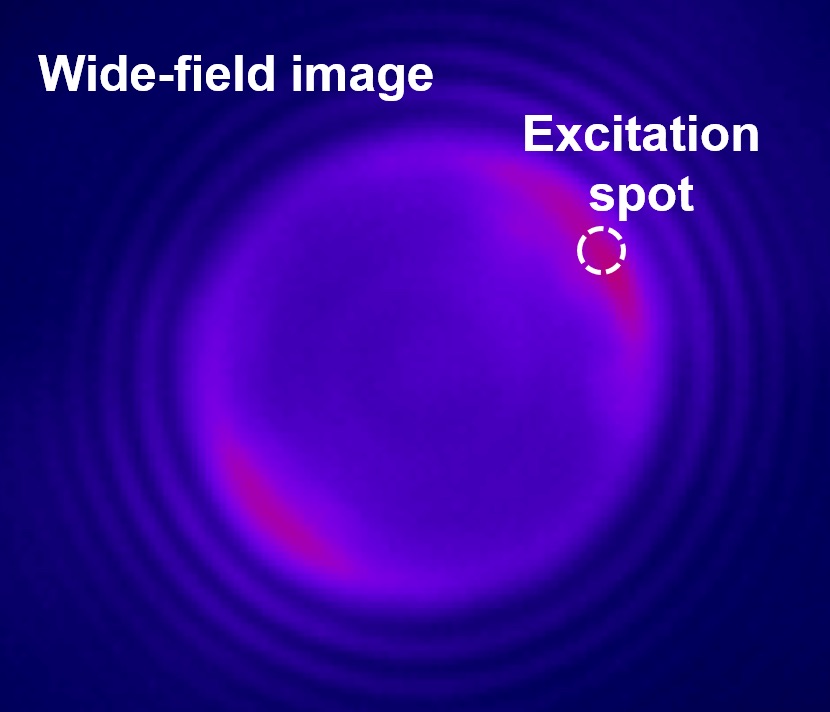Researchers from the University of Technology Sydney (UTS) have demonstrated how a microcavity laser can produce energy-saving and user-safe laser emissions requiring low pump power. The work has implications for nanoscale biological applications.

As biosensing and bioimaging research seeks to look deep inside tissue to the intracellular level, miniaturizing laser devices poses significant challenges for these nanoscale biological applications. Courtesy of Jiajia Zhou.
By controlling the luminescent emitters contained within individual nanoparticles to interact with one another, enabling present electrons to accumulate at specific energy levels, the research team overcame the constraint of normally low pump power’s insufficiency in creating nanoparticles capable of lasing, said Jiajia Zhou, a research fellow and lecturer at UTS.
That means, Zhou said, that the nanoparticles in the new system will still lase at very low pump powers. The researchers demonstrated a two order of magnitude lower pumping threshold compared to that typically achievable.
To make it happen, the research team engineered the binding surface of the nanoparticle matrix to form a cavity surface with a uniform single layer.
According to Zhou, the NIR microcavity laser could potentially be embedded in thick tissues and single cells where it could sense environmental indicators such as temperature, pH, and refractive index.
“Monitoring the change of these indicators can tell us the health status of the tissues or cells, which sits in the scope of early-stage disease detection,” Zhou said.
The discovery holds great promise for biological applications, said professor Dayong Jin, director of the UTS Institute for Biomedical Materials and Devices.
“I think this is definitely a step forward to realizing the dream that just as we use a laser pointer on a PowerPoint slide, we could point a tiny device inside a cell and illuminate an area of interest inside the compartments of a cell.”
Lowering the requirement for pump power reduces tissue damage as the laser penetrates the sample. Additionally, the laser senses indicators more accurately due to its narrow beam. Fluorescence-based sensing, on the other hand, is negatively influence by interference.
“We have demonstrated that a single nanoparticle, which is smaller than an intracellular compartment, can act like a laser, and at low power, but it can still emit a sharp signal. In other words, a ‘laser pointer’ small enough to get inside a cancer cell and illuminate to stop the engine of that cancer cell,” Jin said.
The research was published in Nature Communications (www.doi.org/10.1038/s41467-020-19797-4).